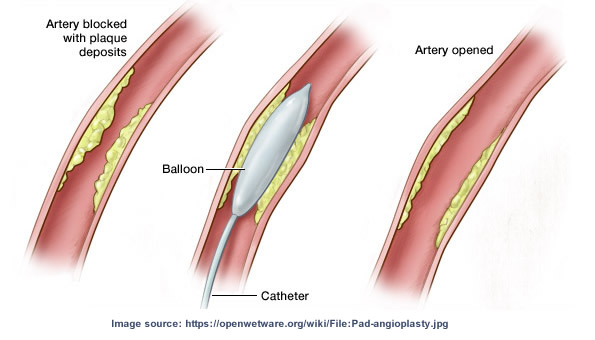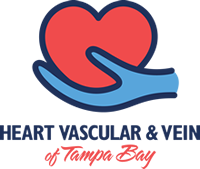Drug-Coated Balloon Angioplasty
Overview of DCB
Drug-Coated Balloon (DCB) angioplasty is similar to plain old balloon angioplasty procedurally, but there is the addition of an anti-proliferative medication coating the balloon, as well as an excipient to aid in drug transfer, which may help prevent restenosis. Restenosis is the re-narrowing of the vessel at a site that was previously treated. Using a drug-coated balloon has the potential to prohibit cell division, limiting the amount of restenosis, or blockage re-growth after treatment.

Angioplasty with a drug-coated balloon is done in a catheterization lab (“cath lab”). The doctor injects a special dye through a long, thin tube called a catheter into your bloodstream. The dye allows the doctor to view your arteries on an x-ray monitor. A device with a small balloon on its tip is then inserted through an artery in your leg and is threaded through the arteries until it reaches the narrowed area. The balloon is inflated which flattens the plaque against the wall of the artery, opening the artery and restoring blood flow. Then the balloon is deflated and removed from the body. Once that is complete, a new balloon, which is coated with an anti-proliferative medication, is inserted through the same artery in your leg and is threaded through the arteries until it reaches the previously treated narrowed area. The balloon is then inflated, and the medication on the balloon surface is delivered to the artery wall and surrounding tissue. After a designated period of time, your doctor will deflate the balloon and remove it from your body. They will then evaluate if any further treatment is necessary to maintain healthy blood flow through the area treated.
Benefits include:
- Superior safety and effectiveness as compared to conventional plain old balloon angioplasty
- The narrowing in the artery may be reduced, resulting in improved blood flow
- Major complications are uncommon
- You may be able to return to normal activities shortly after the procedure
- The procedure is normally done under local anesthesia, which involves fewer risks than general anesthesia (“putting you under”)
Potential Risks of Balloon Angioplasty:
- The insertion site may bleed or become infected
- The artery may become blocked again (restenosis)
- The artery may tear (artery dissection)
- The artery may develop a hole (artery perforation)
Please note: Information on this site should not be used as a substitute for talking with your doctor. Always talk with your doctor about diagnosis and treatment information.
